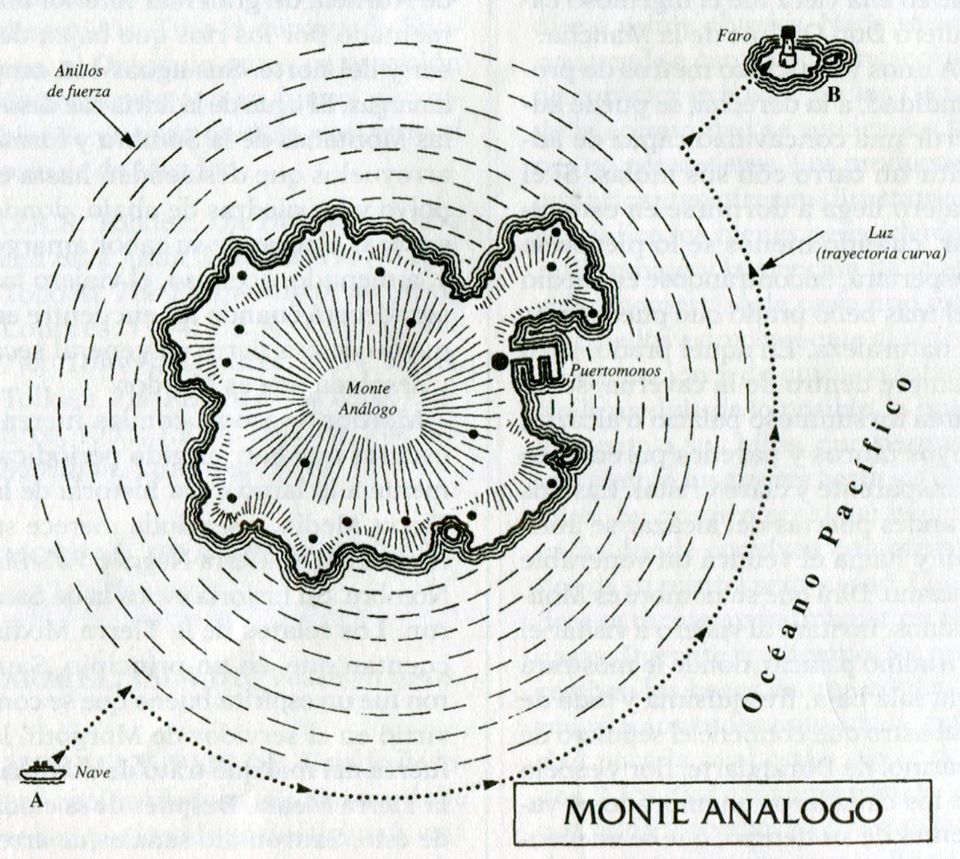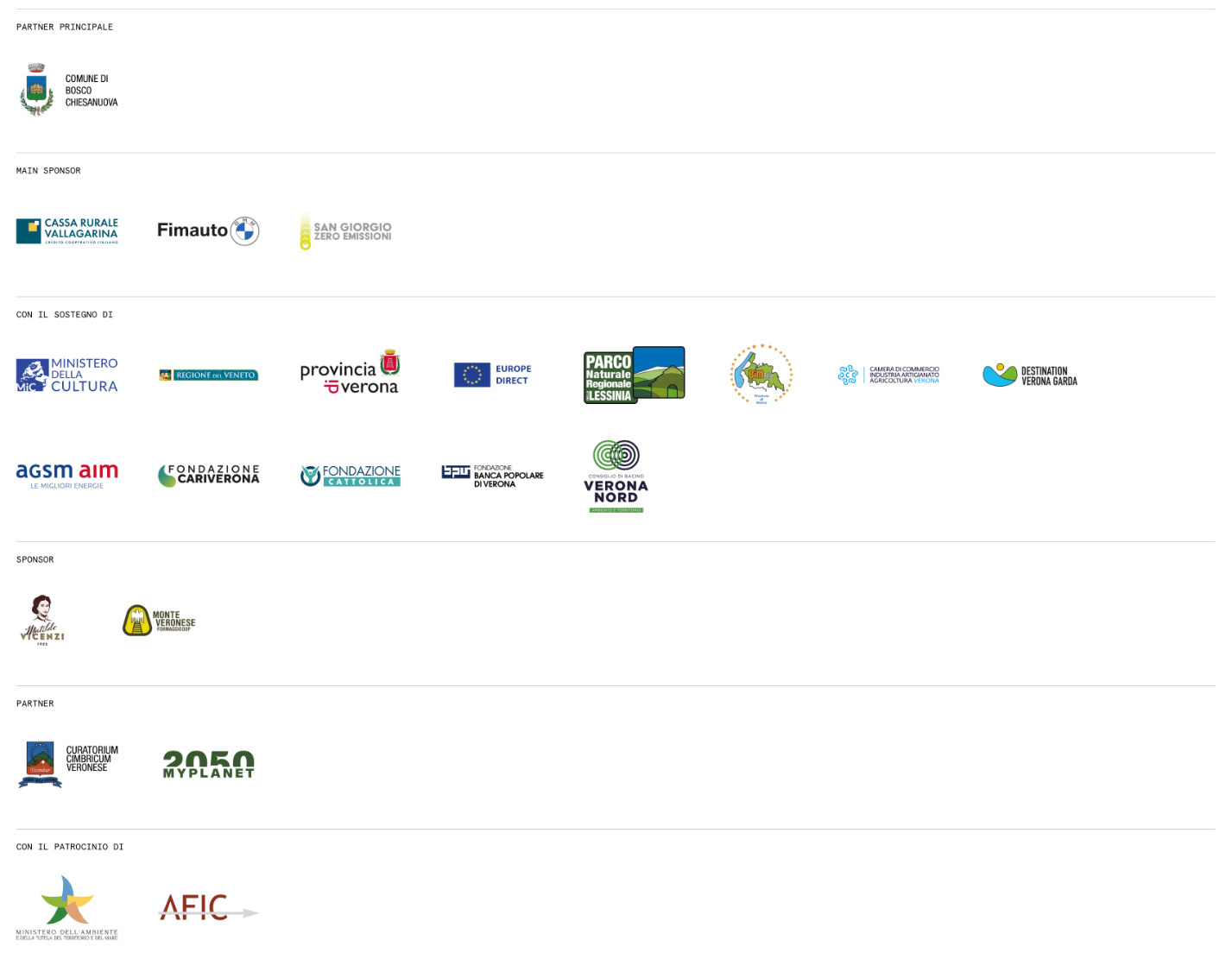OF THE REAL AND IMAGINARY

“Now, Sinai, Nebo and even Olympus have long since become what the mountaineers call cow pastures; and even the highest peaks of the Himalayas are no longer considered inaccessible today. All these summits have thus lost their analogical power. The symbol has had to take refuge in entirely mythical mountains, such as Mount Meru of the Hindus.” So wrote René Daumal in the first chapter of his unfinished masterpiece, Mount Analogue, on which he worked until his sud- den death in 1944. Yet at that time, the ascents to the sum- mits of the most “inaccessible” mountains were yet to come: Everest would be conquered in 1953 and K2 in 1954. The French philosopher, however, had already guessed that Man would end up depriving the real mountains of all sacredness, conquering them and making them a battleground for mountaineering feats and records. Perhaps he did not imagine that in the new millennium many of them would be reduced to a mere itinerary for paying excursionists, where even the allure of the Alpine conquest would be watered down.
And so, with the fading of the myth that hovered around the real mountain, the symbolic reach of the imaginary, or im- agined, mountain has strengthened. If today the ascent to Mount Olympus is only an excursion of medium difficulty that takes place in two days, up to the 3000 metres of a peak like many others between Thessaly and Macedonia, the inacces- sible, mythical Olympus, home of the Greek gods, becomes much more real and fascinating in our imagination. And isn’t the non-existent Purgatory a real mountain in Christian-West- ern thought? As well as Meru in Hindu and Buddhist culture, Venusberg in Germanic mythology or the mythical Uluru for Australian aborigines.
Does it only remain for us to seek, in the imaginary moun- tains, that link between the Earth and the Sky that has always been inherent in the existence of the high lands? An answer can again be found in Daumal’s book: “For a mountain to play the role of Mount Analogue, its summit must be inacces- sible, but its base accessible to human beings as nature has made them. It must be unique and it must exist geographi- cally. The gateway to the invisible must be visible.” Because there remain few inaccessible mountain peaks on planet Earth, the Film Festival della Lessinia has devoted its ener- gies to scaling, without ever fully reaching, the symbolic and mythical meanings of the mountains, and to investigating the lives of those who work at their base, on their slopes, and on their peaks and, with thoughts and desires, even higher up.
It is stimulating, in this twenty-fourth edition, to compare – even in an analogous sense – the real and imaginary moun- tains in the sixty-three films on the programme: for example, to juxtapose Shangri-La, the idyllic valley of eternal youth in the film by Frank Capra, with the mountain that is still wound- ed by the residues of the Vietnam war or that carved out by a dam that will submerge more than 5000 hectares in China. In the retrospective “The Imaginary Mountain” we rise symbol- ically with the seven most powerful men on Earth in the film La Montaña Sagrada by Jodorowsky (inspired by Daumel’s book, which the composer Michele Lobaccaro will recount in music in an appointment of “Higher Words”). The Slovenian film Rudar narrates with chilling realism the story of other powerful men who try to cover up a massacre in the bowels of the mountains. If the thematic tribute of this year’s Festival turns our gaze toward the horizon of the imaginary, on the other hand the raw realities of climate change are brought to the fore in the images of glaciers melting in Beyond the Obvious – Daniel Schwartz Photographer. Old people are brought to die on the peaks of Monte Narayama in the Japanese myth depicted in the film Narayana Bushiko, while the expression of a child who watches his father’s suicide leads us to reflect in the Peruvian feature Retablo, as do the small exertions of two children who drag their mother’s corpse toward its burial place in the short film Nueve nudos. A liberal synthesis between symbolism, imagination and reality also characterises the Twin Peaks of David Lynch’s celebrated saga.
Scrolling through the titles of the films, imagination and reality mix continually. And this should not surprise us, for it is precisely the art of cinema that does this. Thus, in the short film section, two animated works in competition, the evocative La tigre de Tasmanie and the dreamlike Die Herberge, are shown alongside a summit that seems also to have come from a drawing but is, in fact, real and made of the bright orange lifejackets of migrants who died at sea: 8th Continent. There is also a walk toward an ancient monastery, in the Croatian film Kratki Izlet, which turns into a journey into the unconscious of its protagonists; there is the ascent to the Drei Zinnen, the famous Tre Cime di Lavaredo, which makes precarious family balances explode; there is the loss of an adored motorbike, La Persistente, which transforms an innocuous centaur into a savage avenger. Out of time, and yet very much alive, is the Lithuanian animal and plant microcosm of The Ancient Wood, as also seems “out of time” the prohibition on filming women’s daily lives in the masculine culture of Gora, in the mountains of Kosovo. And in the thirty-seven countries of this edition, with twenty-three Italian premieres, the stories – whether real or imaginary – include many others, tangible evidence of the research that the Festival carries out every year, in every corner – real or imaginary – of the planet.
Travelling with the imagination will be the children and young people: lucky them! The section FFDL+ (3+, 6+, 9+: there are films for every age) confirms its vocation for fantastic explo- ration, much as children from all over the world have drawn their imaginary mountains in the exhibition curated by the Pinacoteca Internazionale dell’Età Evolutiva Aldo Ciboldi. Even the seven photographs of the project SÅM - SEED represent an extraordinary exploration depicting the Lessinia in the exhibit set up in the new Centro Socio Culturale in Bosco Chiesanuova, a site that this year joins the spaces of the Te- atro Vittoria and the Piazza del Festival, this year the seat of very real food and wine evenings, whose offerings will take participants on a voyage of the imagination and the senses amongst the flavours of the Lessinia territory, reinterpreted by the chefs of Lessinia Gourmet.A great part of the literary encounters of the Festival are devoted to imaginary, symbolic or mythical mountains, among these the one with Elena Loewenthal and mountains in the Hebrew Bible, and the round table organized by the Cura- torium Cimbricum Veronense on the “Fantastic Mountain”.
Opening and closing the Festival are two very special occasions: the first with the singer-songwriter Massimo Bubola and his Ballad without a Name, one hundred years after the Great War, the second a double closing tribute, to Mario Rigoni Stern, five years after his death, and to Ermanno Olmi. With the screening of The Tree of Wooden Clogs, the Festival honours this master among masters, who of the mountains and rural culture has described, poetically, the real and the imaginary.
Alessandro Anderloni
Direttore artistico
